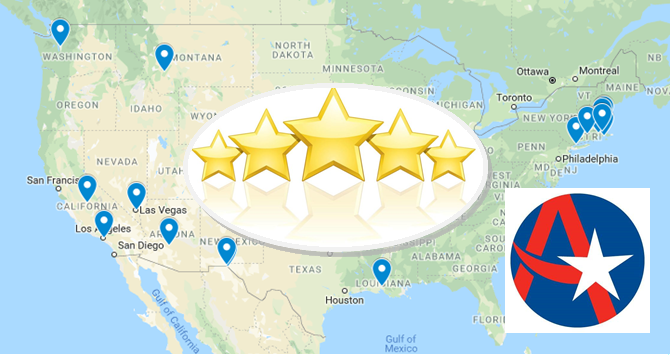Apollo Safety Blog

Every Gas Detector from Apollo Safety Comes with a Year of FREE Calibrations
Because safety doesn’t stop at the sale.
When you buy a gas detector from Apollo Safety, you’re not just buying a product, you’re investing in protection, precision, and peace of mind. That’s why every gas detector we sell comes with one full year of FREE calibrations.
Why is that so important?
🔧 Gas detectors drift over time—and without proper calibration, they may fail to detect dangerous gas levels.
📅 Regular calibration ensures compliance with OSHA, NFPA, and industry safety standards.
🛠️ Calibrations catch issues early, keeping your team and your equipment protected before problems escalate.
What You Get with Your Free Year:
✔️ Expert calibration using NIST traceable gas
✔️ Quick turnaround times
✔️ Service from trained technicians who know your equipment inside and out
Need More Coverage?
We also offer long-term calibration contracts with four flexible service levels: Bronze, Silver, Gold, and Platinum. These are tailored to match your needs and your budget!
Your Safety is Ours to Protect.
Have questions? We’re just a call or click away.
📞 1-800-813-5408
📧 sales@apollosafety.com
🌐 www.apollosafety.com
How to get FREE Calibrations for one whole year!
Every Gas Detector from Apollo Safety Comes with a Year of FREE Calibrations Because safety doesn’t stop at the sale. When you buy a gas detector from Apollo Safety, you’re not just buying a product, you’re investing in protection, precision, and peace of mind. That’s why every gas detector we sell comes with one full […]

Spring break is the perfect time to escape the daily grind, whether you’re heading to a tropical resort, a ski lodge, or an Airbnb in a new city. But while you’re focused on fun and relaxation, there’s one hidden danger that could put your trip, and your life, at risk: carbon monoxide (CO) poisoning.
Carbon monoxide is a colorless, odorless gas that can be deadly when inhaled in high concentrations. Hotels, vacation rentals, and even RVs may have appliances or heating systems that produce CO, and not every accommodation has proper ventilation or working detectors in place.
To ensure a safe and worry-free trip, here’s how you can protect yourself and your loved ones from carbon monoxide exposure while traveling this spring break.
Why Carbon Monoxide is a Travel Hazard
CO poisoning can happen anywhere, but travelers are especially at risk because:
- Many hotels and vacation rentals do not have CO detectors installed.
- Heating systems, fireplaces, and gas appliances may not be properly maintained.
- Vehicles left running in attached garages or enclosed spaces can cause CO buildup.
- Portable generators, often used during power outages, emit CO if not properly ventilated.
How to Stay Safe from Carbon Monoxide While Traveling
1. Pack a Portable CO Detector
Most hotels and Airbnbs don’t require carbon monoxide detectors in every room. A portable CO detector can alert you to danger before it’s too late. Compact and easy to travel with, these devices are a simple yet powerful way to stay protected.
2. Check for CO Alarms Upon Arrival
As soon as you check in, inspect the room for a CO detector. If there isn’t one, ask the front desk or the host if they have one installed. If they don’t, use your portable detector for added protection.
3. Be Aware of Potential CO Sources
- If your room has a fireplace, gas heater, or gas stove, make sure the area is well-ventilated.
- Never use a gas stove or oven to heat a room.
- Keep windows cracked if using fuel-burning appliances.
4. Know the Symptoms of CO Poisoning
CO poisoning can feel like motion sickness, food poisoning, or the flu, making it hard to recognize. Symptoms include:
- Headache
- Dizziness
- Nausea or vomiting
- Confusion
- Shortness of breath
- Loss of consciousness
If you or anyone in your group experiences these symptoms and suspect CO exposure, get fresh air immediately and call emergency services.
5. Avoid Running Engines in Enclosed Spaces
- Never leave a car idling in a garage, even with the door open.
- If you’re using a generator, place it outside and far from windows, doors, or vents.
Protect Yourself with a Portable CO Detector
Your safety shouldn’t be left to chance. A portable carbon monoxide gas detector from Apollo Safety can give you peace of mind whether you’re staying in a hotel, Airbnb, or even a rental car.
Before you head out for spring break, contact Apollo Safety to find the best portable CO detector for your travels. Stay safe, stay aware, and enjoy your trip without worry!
👉 Call or visit us today to get yours! (1-800-813-5408)
Spring Break is Here! How to keep you and your family safe from carbon monoxide while traveling
Spring break is the perfect time to escape the daily grind, whether you’re heading to a tropical resort, a ski lodge, or an Airbnb in a new city. But while you’re focused on fun and relaxation, there’s one hidden danger that could put your trip, and your life, at risk: carbon monoxide (CO) poisoning. Carbon […]
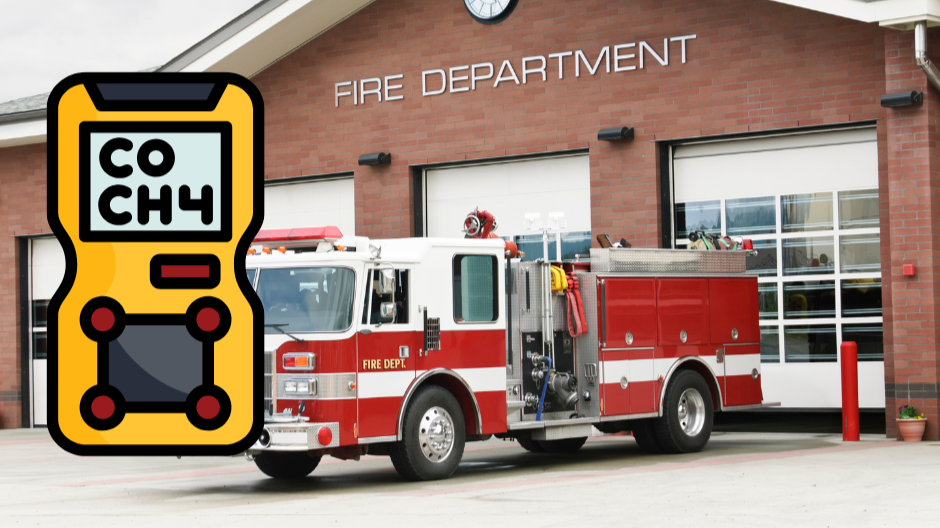
Gas detectors are essential for workplace safety, but without regular calibration, they can provide inaccurate reading, putting workers at risk and leaving businesses non-compliant.
At Apollo Safety, we help companies stay OSHA, MSHA, and ANSI/ISA compliant while reducing costs with our Calibration Contracts.
How Often Should Gas Detectors Be Calibrated?
- OSHA (29 CFR 1910.146 & 1910.120) – Requires calibration per manufacturer guidelines.
- MSHA (30 CFR 75.320) – Methane detectors must be calibrated at least every 31 days.
- ANSI/ISA-60079-29-2 – Recommends:
✅ Daily bump tests in high-risk environments.
✅ Full calibration every 1-3 months, depending on exposure.
- Manufacturer Guidelines – Typically suggests:
✅ Daily bump tests to verify sensor response.
✅ Full calibration every 30-180 days based on usage and conditions.
Why Invest in an Apollo Safety Calibration Agreement?
✔ Save Money – Lower costs with scheduled calibration services.
✔ Save on Parts – Certain levels cover the cost of parts and labor for repairs
✔ Stay Compliant – Meet industry regulations effortlessly.
✔ Minimize Downtime – Keep your equipment in peak condition with our 24/48-hour turnaround time!
✔ Get Priority Support – Faster service when you need it most.
✔ Get Peace of Mind – Our Calibration Agreements offer you and your business peace of mind, knowing that you will always have a working, compliant gas detection device.
Is Your Business at Risk?
Companies that don’t calibrate their gas detectors regularly risk fines, failed inspections, and worker safety hazards. A Calibration Contract ensures compliance, safety, and long-term cost savings.
Let’s talk! How does your company handle gas detector calibration? Share your thoughts in the comments or reach out to our team to learn more.
📩 Want to stay updated on workplace safety? Subscribe to our newsletter for expert insights!
📞 Contact us at sales@apollosafety.com or call us 1-800-813-5408
Are Your Gas Detectors Compliant? Here’s Why Regular Calibration Matters
Gas detectors are essential for workplace safety, but without regular calibration, they can provide inaccurate reading, putting workers at risk and leaving businesses non-compliant. At Apollo Safety, we help companies stay OSHA, MSHA, and ANSI/ISA compliant while reducing costs with our Calibration Contracts. How Often Should Gas Detectors Be Calibrated? OSHA (29 CFR 1910.146 & […]

*Disclaimer: This is a fictional story inspired by real-life events and dangers faced everyday by firefighters and first responders. While the events and characters are completely hypothetical, this scenario reflects the critical importance of proper equipment maintenance, including gas detector calibrations.
The call came in just after 2 a.m. for a family unconscious in their home, possible carbon monoxide poisoning, right on the town line. Lieutenant barely had time to sip his coffee before he and his crew were in the engine, racing through the empty streets.
Dispatch gave them the basics: a neighbor had called it in after finding the family unresponsive. No sign of fire, no smell of gas.
As they pulled up, the house looked undisturbed, porch light still on. But the Lieutenant knew better. Carbon monoxide is invisible and odorless. It’s a silent killer.
“Mask up,” he ordered, pulling his multi-gas detector from his gear. He pressed the power button. Nothing. He frowned, tried again. The screen flickered, then went dark.
His fellow firefighter noticed. “Dead battery?”
The Lieutenant checked. No, the battery was fine. Then his eyes landed on the calibration sticker. Expired. His gut twisted. Hadn’t they been meaning to check these last week?
Just then, a second engine from their neighboring town pulled in to assist.
Lieutenant briefed them on the situation. Thankfully, the second engine had a freshly calibrated gas detector device. Within seconds of turning it on, the screen flashed red: HIGH CO LEVEL FATAL EXPOSURE.
“Get them out! Now!” The Lieutenant shouted.
They rushed in, lifting the unconscious family members one by one, hauling them onto the front lawn. Paramedics swarmed in, administering oxygen. A kid, maybe six or seven, gasped awake first, coughing, confused.
The lieutenant exhaled sharply. A few more minutes, and this would’ve been a body recovery, not a rescue.
He looked down at his non-functioning detector. A simple calibration and he wouldn’t have been caught unprepared.
Tomorrow morning, before anything, all of their non-compliant gas detectors were being shipped out for calibration. Thankfully, with Apollo Safety’s 24/48-hour turnaround promise, he knows he’ll get back compliant and calibrated gas detectors in no time.
It Only Takes Once…
*Disclaimer: This is a fictional story inspired by real-life events and dangers faced everyday by firefighters and first responders. While the events and characters are completely hypothetical, this scenario reflects the critical importance of proper equipment maintenance, including gas detector calibrations. The call came in just after 2 a.m. for a family unconscious in their […]
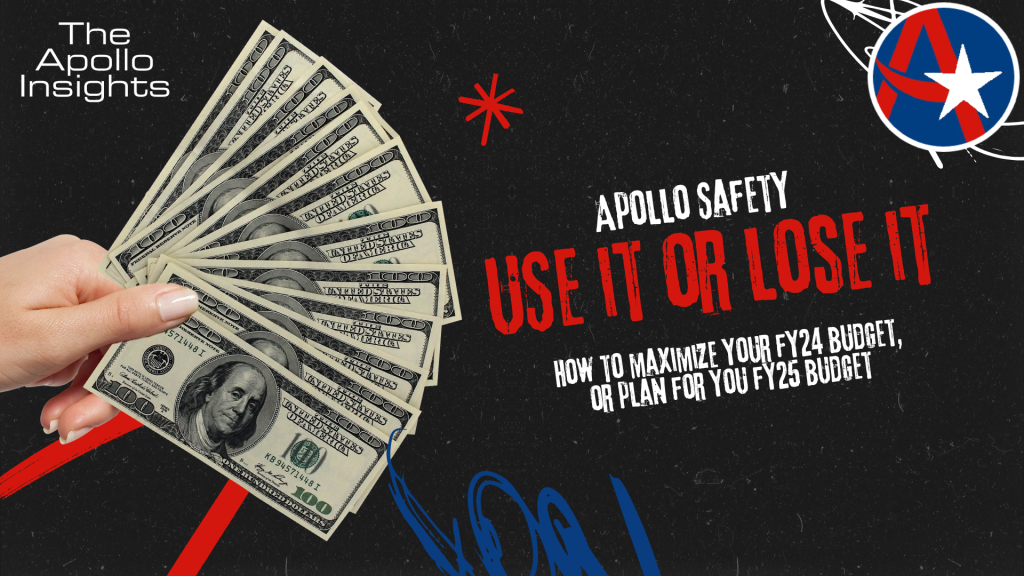
As July 1st approaches, many of our trusted partners in fire services, wastewater treatment, industrial safety and more are reviewing their remaining FY24 budgets. Whether you still have funds available or you’re already looking ahead, this is the perfect time to invest in gas detection, calibration services, or safety upgrades.
At Apollo Safety, we’re here to help you make smart, impactful decisions to protect your team and your bottom line.
Use It or Lose It: FY24 Budget Check-In
If you’ve got funds left before the new fiscal year starts, consider:
- Purchasing additional detectors to have spares on hand
- Scheduling calibration or maintenance on your existing equipment
- Replacing outdated monitors that no longer meet safety standards
- Joining a repair and calibration contract to keep your detectors in perfect shape for the next year
Let us help you maximize your remaining budget before it expires!
Planning Ahead for FY25? Start Smart.
Looking ahead to July 1st? Now’s the time to start planning for:
- Annual calibration and servicing schedules
- Equipment expansions for new projects or hires
- Upgrades to more advanced or connected gas detection systems
Pro Tip: Build a calibration contract into your FY25 budget to avoid any surprise maintenance or repair costs that may come up.
Quick Safety Tip:
How often should you calibrate your gas detectors?
Most manufacturers recommend calibration every 6 months, but in high-use or high-risk environments, monthly bump testing and quarterly calibrations can catch issues before they become dangerous.
Let’s Talk Safety Strategy
Do you have questions or need help planning your safety budget?
Call us now at 800-813-5408 to talk to an expert about your safety needs.
Thank you for trusting Apollo Safety. We’re proud to be your partner in protection—today and in the future.
Use it or Lose it
As July 1st approaches, many of our trusted partners in fire services, wastewater treatment, industrial safety and more are reviewing their remaining FY24 budgets. Whether you still have funds available or you’re already looking ahead, this is the perfect time to invest in gas detection, calibration services, or safety upgrades. At Apollo Safety, we’re here […]
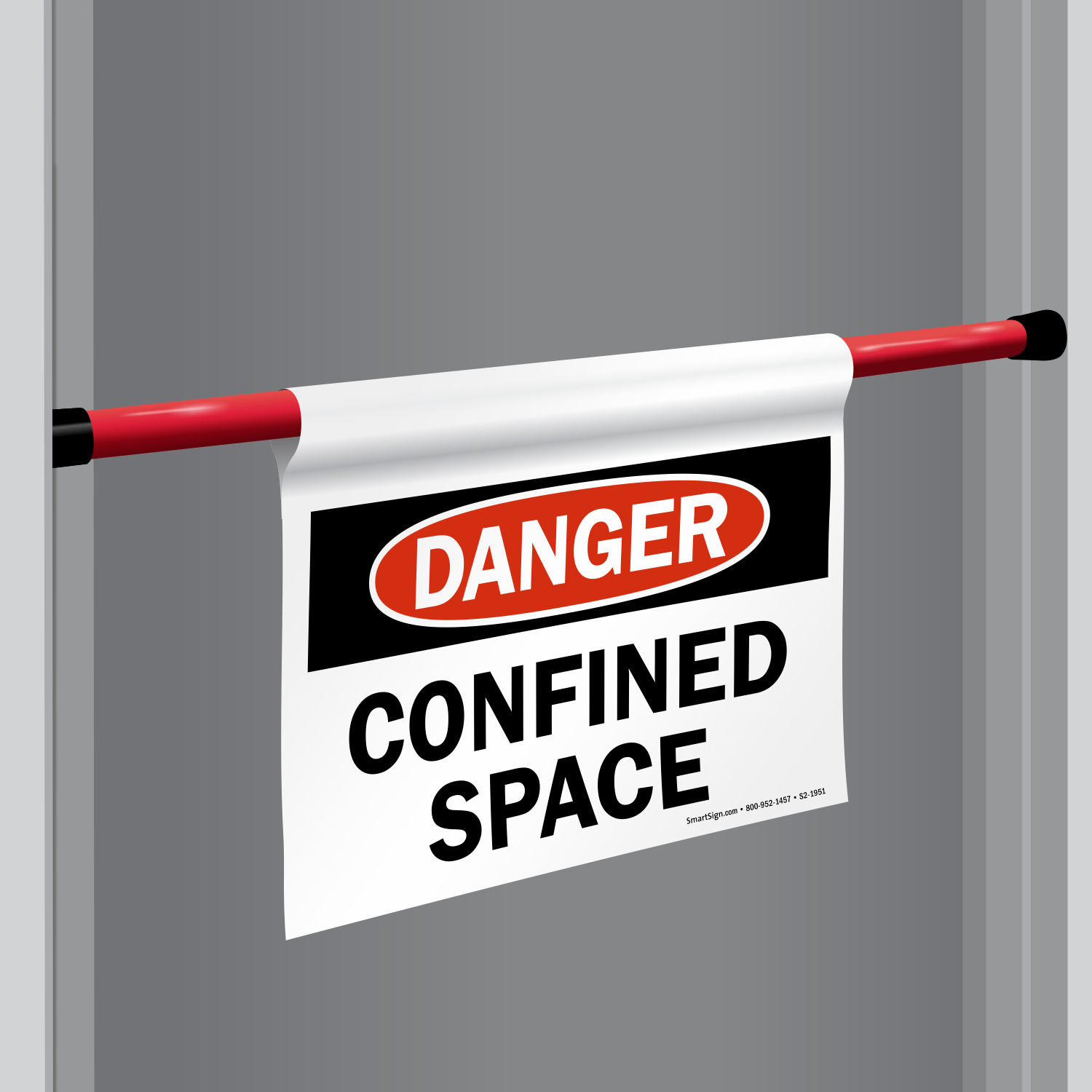
The Importance of Confined Space Training: Protecting Workers and Saving Lives
Confined spaces are some of the most hazardous work environments, yet they are found in many industries ranging from construction to manufacturing. Without proper training, workers can face dangerous threats such as toxic gas exposure, oxygen deficiency, and hazardous atmospheres. You can’t always see, smell, or taste what is capable of killing you, but your […]
MSA (Mine Safety Appliances) is a company that manufactures safety equipment, including gas detection systems. The calibration of MSA gas detection equipment can be performed in several ways:
In-house calibration: If you have the necessary equipment and expertise, you can calibrate the detectors yourself, following the manufacturer’s guidelines and recommendations.
MSA service centers: MSA has authorized service centers worldwide that can calibrate your gas detection equipment. You can find a service center near you by visiting their website or contacting their customer support.
Third-party calibration services: There are independent companies that specialize in the calibration of gas detection equipment, including MSA products. These companies can provide calibration services that adhere to the manufacturer’s guidelines and standards.
MSA-certified technicians: MSA may also have certified technicians who can come to your site to perform calibration services, depending on your location and the specific product you’re using.
In any case, always follow the manufacturer’s guidelines for calibration intervals and procedures to ensure the accuracy and reliability of your gas detection equipment. Regular calibration is essential to maintain the performance and safety of gas detectors.
Who Calibrates MSA Gas Detection
MSA (Mine Safety Appliances) is a company that manufactures safety equipment, including gas detection systems. The calibration of MSA gas detection equipment can be performed in several ways: In-house calibration: If you have the necessary equipment and expertise, you can calibrate the detectors yourself, following the manufacturer’s guidelines and recommendations. MSA service centers: MSA has […]

Industrial Scientific Authorized Service Center
Apollo Safety is proud to announce our new certification as an Industrial Scientific Authorized Service Center
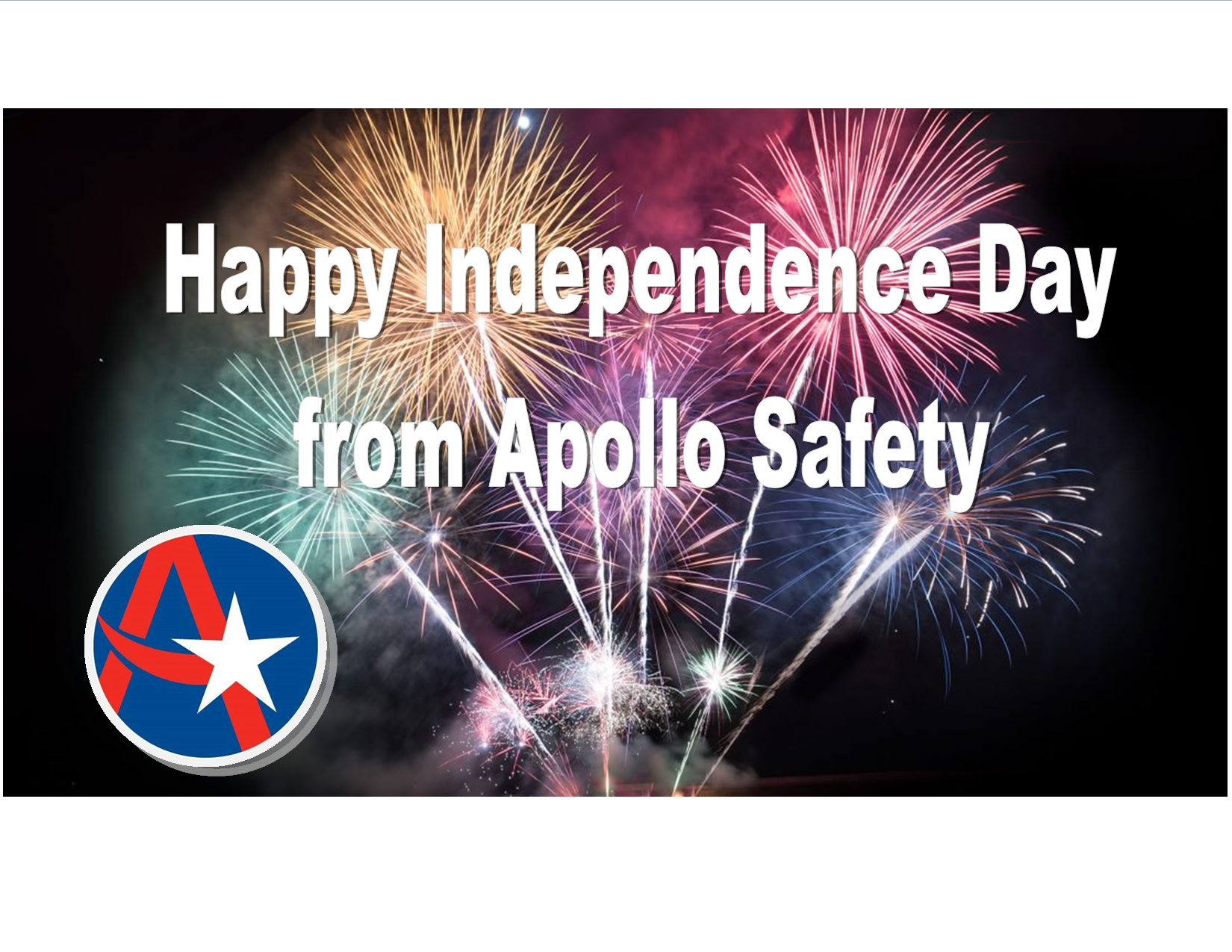
Fireworks and Safety
Independence Day is a time of celebration but it can quickly turn into an emergency situation. Small fireworks like sparklers and firecrackers may seem harmless but in 2017 alone they resulted in over 1200 injuries.

Man Down Detection for Lone Workers
Through this monitoring technology, when a lone worker falls and does not get back up right away, the monitor will alert safety supervisors using text or email that includes the worker’s name




